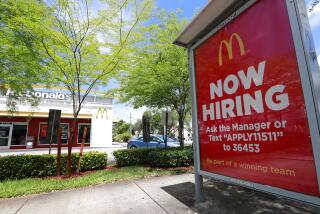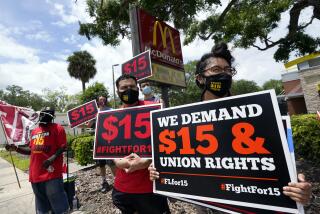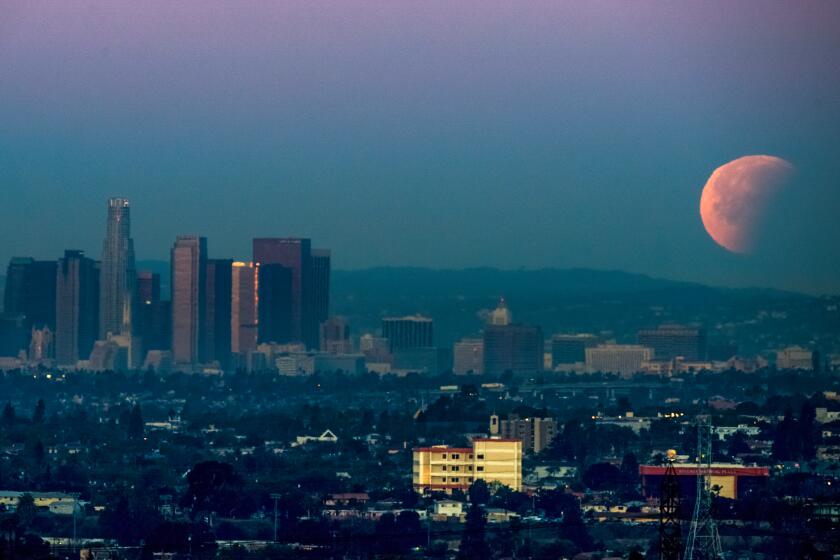Stronger unions mean a strong middle class
- Share via
POLLS TELL US that 58% of eligible workers would join a union if they could, yet union membership in the private sector plummeted to 7.4% in 2006, a record low.
What explains this yawning gap? The fact that, for many Americans, joining a union has become a risk rather than a right. According to the 2005 National Labor Relations Board’s annual report, 31,358 people were disciplined or fired for union activity. The result has been a chill on union organizing.
The Employee Free Choice Act, introduced in Congress this month, seeks to create a thaw. What the act does is simple: It allows workers to form a union if a majority of employees in a workplace sign up for one, short-circuiting an employer-dominated campaign and an additional vote. It also provides meaningful penalties for violating workers’ rights and ensures that collective bargaining will result if workers choose a union. Shrinking union membership affects everyone. Unions paved the way to the middle class for millions and pioneered benefits such as paid pensions and health insurance. Now labor’s sliding numbers are contributing to the squeeze on the middle class. During a period of robust economic growth and record corporate profits, only those at the very top of the heap are enjoying a higher standard of living.Worker productivity jumped by a record 20% between 2000 and 2006, yet real wages (pay adjusted for inflation) edged up an anemic 2%. Meanwhile, fewer workers are getting employer-based health insurance or pensions. Even Alan Greenspan, before retiring as chairman of the Federal Reserve Board, told Congress in 2005 that he found growing inequality of income and wealth in the U.S. “very disturbing.”
In 1935, Congress passed the Wagner Act guaranteeing workers’ right to organize and bargain collectively. It was immediately hailed as labor’s Magna Carta. Since then, amendments, court rulings and NLRB administrative decisions have turned the act on its head, serving to throttle rather than encourage a free and informed choice on unions.
Today, if workers try to organize, the NLRB generally sets a secret-ballot vote a month or more after the formal request. During this period, it is legal for the company to hire anti-union consultants, schedule an unlimited number of mandatory meetings with employees, “predict” that the workplace could be shuttered if the union wins and bar labor representatives from the premises.
It’s not just that the playing field is tilted against organizing; unions are locked out of the stadium. Of course, why would companies limit themselves to what’s legal? Penalties for violating workers’ rights are virtually nonexistent.
Nonetheless, one might ask why the Employee Free Choice Act replaces the secret-ballot vote with majority sign-up. The secret ballot is appropriately considered sacred in a democracy, but it requires a democratic context to be meaningful. These NLRB-supervised elections often take place in highly coercive, even threatening, environments.
Fortune magazine reported last June that “workers are routinely fired or discriminated against for supporting unions . Some [firms] go so far as to close down work sites when employees vote for a union.” As a result, the NLRB elections are more like plebiscites in a dictatorship rather than election day in a democracy. The votes may be counted honestly, but the outcome reflects the fear-ridden atmosphere in which the vote occurs.
The Employee Free Choice Act would restore balance to a system that is driven by aggressive employers, anti-union consultants, coercion and fear. Strengthening free choice in the workplace lays the basis for ensuring a more prosperous economy and a more democratic society. It was Studs Terkel who put it this way: “Respect on the job and a voice at the workplace shouldn’t be something Americans have to work overtime to achieve.”
More to Read
Sign up for Essential California
The most important California stories and recommendations in your inbox every morning.
You may occasionally receive promotional content from the Los Angeles Times.










